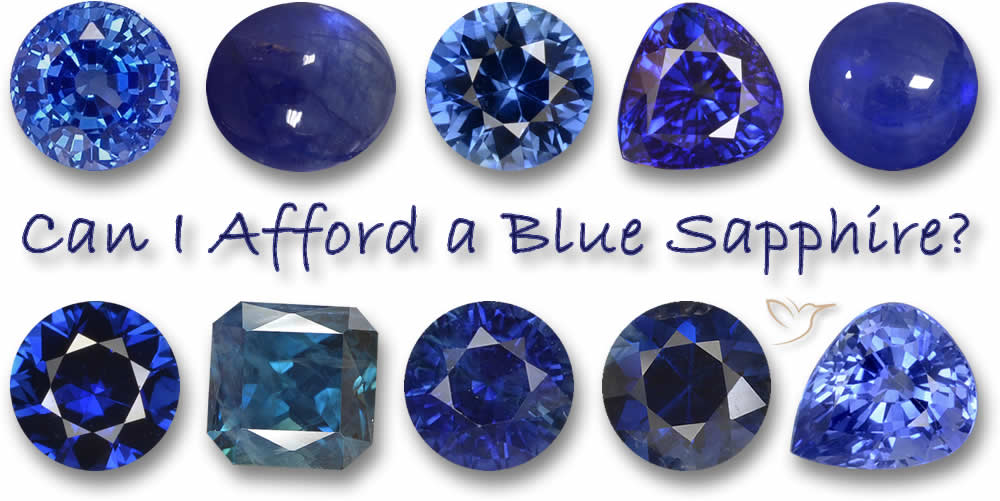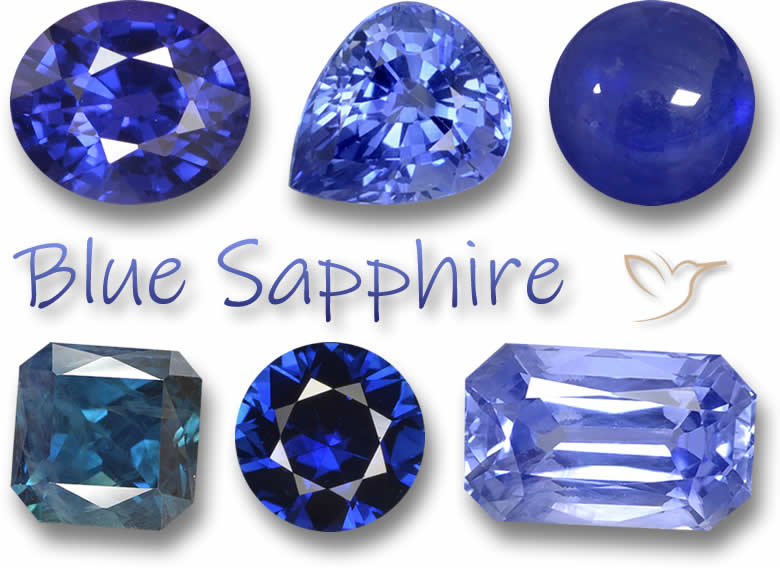Can I Afford a Blue Sapphire?
Table of Contents

Introduction
Can you afford a blue sapphire? Absolutely, yes! But let’s get real - it depends on a few key factors like size, color, clarity, cut, carat weight, and origin. These gorgeous gems can range from just a few bucks to thousands of dollars. So, whether you're dreaming of a dazzling engagement ring or a unique piece of jewelry, there’s likely a sapphire that fits your budget. For a deeper dive into what makes these gems so special, check out our Sapphire Gemstone Information guide.
Blue sapphires are pure eye-candy, with their rich, velvety cornflower hues stealing hearts for centuries. From royal crown jewels to Princess Kate’s iconic $500,000, 12-carat engagement ring, these gems are timeless. More folks are ditching diamonds for vibrant colored stones like sapphires, but are they within reach? Let’s break it down. Curious about current market trends? Explore Sapphire Prices to see what fits your wallet.
Color Range
The color of a blue sapphire is its biggest price driver. Kashmir Blue sapphires, with their deep, velvety royal blue, are the crème de la crème and fetch top dollar. But don’t worry - sapphires come in a stunning spectrum of blues, and not all will break the bank.
Think pastel or baby blue for lighter shades, cornflower or peacock blue for mid-tones, and twilight or midnight blue for darker hues. Each has its own charm, and the less saturated options can be just as gorgeous at a fraction of the cost. You can snag a one-carat sapphire starting at around $40. Pretty tempting, right? To learn how to evaluate these stunning hues, visit our guide on Sapphire Quality.
Size Options
Size matters, especially with sapphires. Large ones are rare and pricey, but smaller stones can still pack a punch. Carat weight can be tricky - some sapphires are cut “bottom-heavy,” making them weigh more but look smaller from the top. Skip the carat confusion and focus on dimensions (e.g., 7mm x 5mm x 4mm) to know exactly what you’re getting.
Smaller sapphires, even as tiny as 1mm, are budget-friendly, starting at about a dollar each. These petite gems are perfect for side stones or channel settings, giving you sparkle without the splurge. Considering sapphires as an investment? Check out Investing in Sapphire for insights on long-term value.
Advantages of Buying Loose Sapphires
Buying loose sapphires is a smart move. Jewelry stores often have limited selections and hefty markups. Plus, once a sapphire is set, prongs or bezels can hide flaws, making it hard to judge quality. With a loose stone, you see exactly what you’re getting - no surprises.
Going loose also saves you money, letting you invest in custom jewelry crafted by a local artisan. It’s like getting a bespoke piece without the boutique price tag. Want to create something truly unique? Learn more about Custom Jewelry with Sapphire to bring your vision to life.
Sapphire Treatments
Untreated, high-quality blue sapphires are rare and cost a fortune - think thousands per carat. Most sapphires today undergo treatments to enhance their color and clarity, making them more affordable. Here’s the lowdown on common treatments:
- Heat Treatment: A furnace session (or several) at 400–1800°C to boost color and clarity.
- Beryllium Treatment: Adds beryllium during heating to enhance color deep within the stone.
- Surface Diffusion: Coats the surface to improve color, though it’s less durable for future cutting.
- Fissure Filling: Fills surface cracks with cobalt-rich glass for a smoother look.
Treatments are fine as long as they’re disclosed. We always clearly state if our sapphires are treated, so you know exactly what you’re buying. For a detailed look at these processes, see our guide on Sapphire Treatments.
Synthetic Sapphires
Lab-grown sapphires are made with the same minerals as natural ones, and they’re stunningly beautiful at a lower price. While they lack the geological “soul” of natural sapphires - formed over eons with the earth’s energy - they’re not fake. Telling them apart without specialized equipment is tough, and they’re a fantastic budget-friendly option.
Cabochons and Star Sapphires
Before faceting became common, sapphires were polished into smooth, dome-shaped cabochons. Today, this cut is used for opaque or translucent stones or for a vintage vibe. Blue sapphire cabochons are affordable and add a unique, retro flair to jewelry.
Star sapphires, with their mesmerizing star-like effect, are often cut as cabochons. Natural, untreated star sapphires, like the famous Star of India, are incredibly rare and valuable. Thankfully, treatments make these beauties more accessible and budget-friendly.

Frequently Asked Questions
Are blue sapphires more expensive than diamonds?
Not always! While top-tier Kashmir sapphires can be pricey, many blue sapphires are more affordable than diamonds, especially smaller or treated stones.
Can I use a blue sapphire for an engagement ring?
Absolutely! Sapphires are durable (9 on the Mohs scale) and make stunning, unique engagement rings, as seen with Princess Kate’s iconic ring.
How can I tell if a sapphire is real?
Distinguishing natural from synthetic sapphires often requires professional equipment. Always buy from reputable sellers who disclose treatments and origins.
Are treated sapphires lower quality?
Not necessarily. Treatments enhance color and clarity, making sapphires more affordable without compromising beauty, as long as they’re disclosed.

